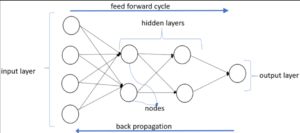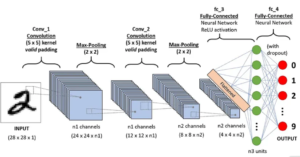Deep learning has revolutionized the field of image recognition in recent years, achieving state-of-the-art results and enabling a wide range of applications. This article will provide a brief explanation of deep learning and its role in image recognition, exploring key concepts and showcasing its potential.
What is Deep Learning?
Deep learning is a subfield of artificial intelligence (AI) concerned with algorithms inspired by the structure and function of the human brain. These algorithms, known as artificial neural networks (ANNs), are composed of interconnected layers of nodes that process information and learn from data.

How Does Deep Learning Work for Image Recognition?
Traditional image recognition methods relied on handcrafted features, where specific characteristics were manually defined for object identification. Deep learning, however, takes a different approach. Convolutional Neural Networks (CNNs), a specific type of ANN, are trained on large datasets of labeled images. These networks learn to automatically extract relevant features and patterns from the data, eliminating the need for manual feature engineering.
Key Concepts in Deep Learning Image Recognition:
- Convolutional layers: These layers extract features from images by applying filters that detect edges, shapes, and other patterns.
- Pooling layers: These layers downsample the feature maps extracted by convolutional layers, reducing the dimensionality of data and improving computational efficiency.
- Activation functions: These functions introduce non-linearity to the network, allowing it to learn complex relationships between features.
- Loss functions: These functions measure the difference between the network’s predictions and the ground truth labels, guiding the network’s learning process.
- Optimization algorithms: These algorithms update the network’s weights and biases based on the loss function, allowing it to improve its accuracy over time.
Benefits of Deep Learning for Image Recognition:
- High accuracy: Deep learning models have achieved remarkable accuracy in various image recognition tasks, surpassing traditional methods in many cases.
- Scalability: Deep learning models can handle large datasets of images efficiently, making them suitable for real-world applications.
- Flexibility: Deep learning models can be adapted to various tasks, including object detection, image classification, and object segmentation.
Applications of Deep Learning in Image Recognition:
- Self-driving cars: Deep learning is used to identify objects and pedestrians on the road, enabling safe navigation.
- Facial recognition: Deep learning is used in security systems and law enforcement to identify individuals.
- Medical diagnosis: Deep learning is used to analyze medical images for disease detection and diagnosis.
- Image tagging and search: Deep learning is used to automatically tag images with relevant keywords, enabling efficient image search and organization.
- Industrial inspection: Deep learning is used to detect defects in products and equipment, improving quality control.
Challenges and Future of Deep Learning in Image Recognition:
Despite its success, deep learning still faces challenges. These include:
- Data requirements: Deep learning models require large amounts of data for training, which can be costly and time-consuming to collect.
- Interpretability: Deep learning models can be difficult to interpret, making it challenging to understand their decision-making process.
- Bias and fairness: Deep learning models can be biased depending on the data they are trained on, leading to unfair outcomes.
However, researchers are actively working on addressing these challenges, and the future of deep learning in image recognition is promising. Continued advancements in computing power, data collection methods, and model architectures will lead to even more powerful and versatile image recognition systems.
Conclusion:
Deep learning has transformed the field of image recognition, enabling us to see the world in new ways. With its high accuracy, scalability, and flexibility, this technology is paving the way for exciting new applications across various industries. As research continues, we can expect even further advancements in this rapidly evolving field.



